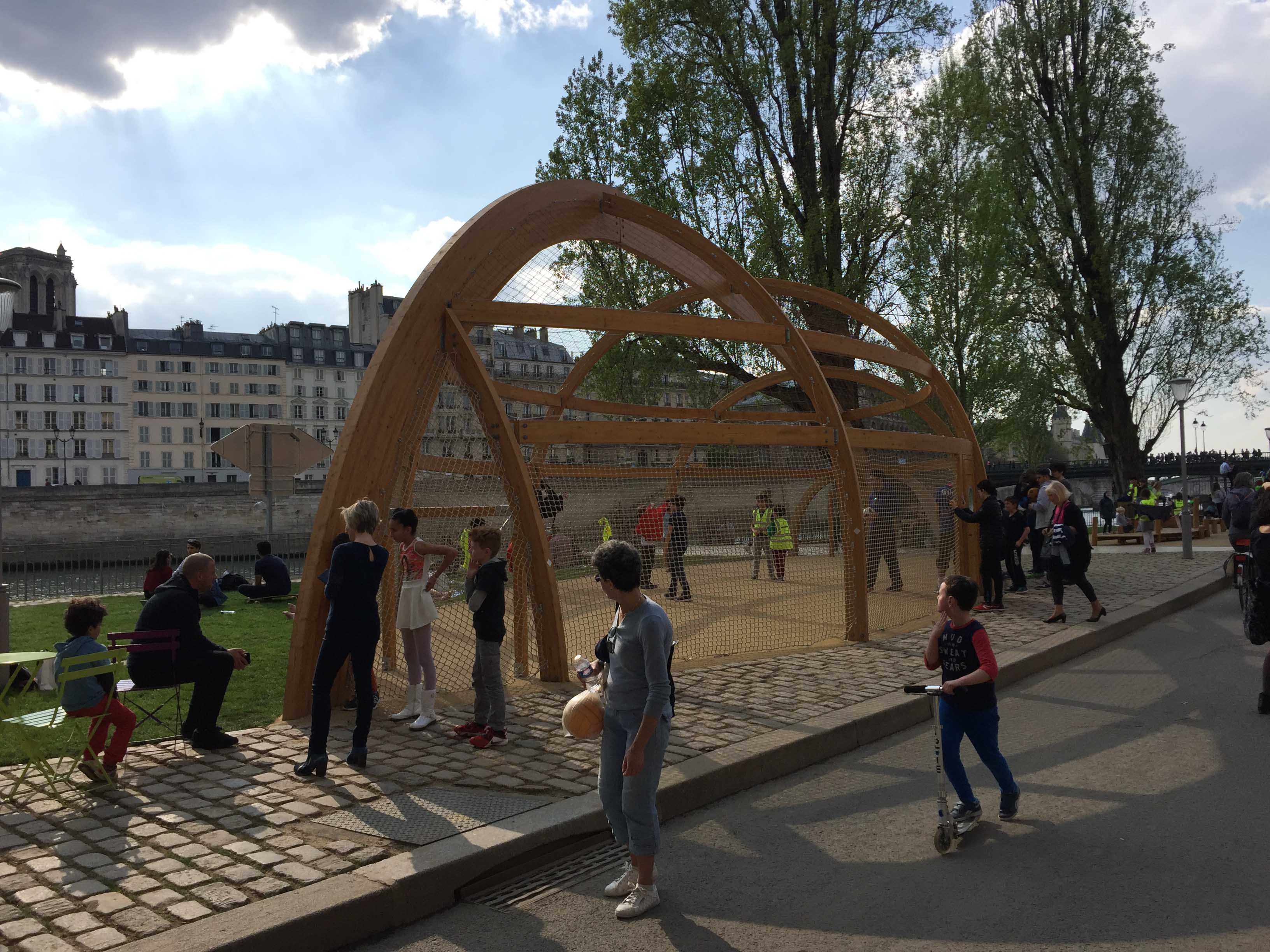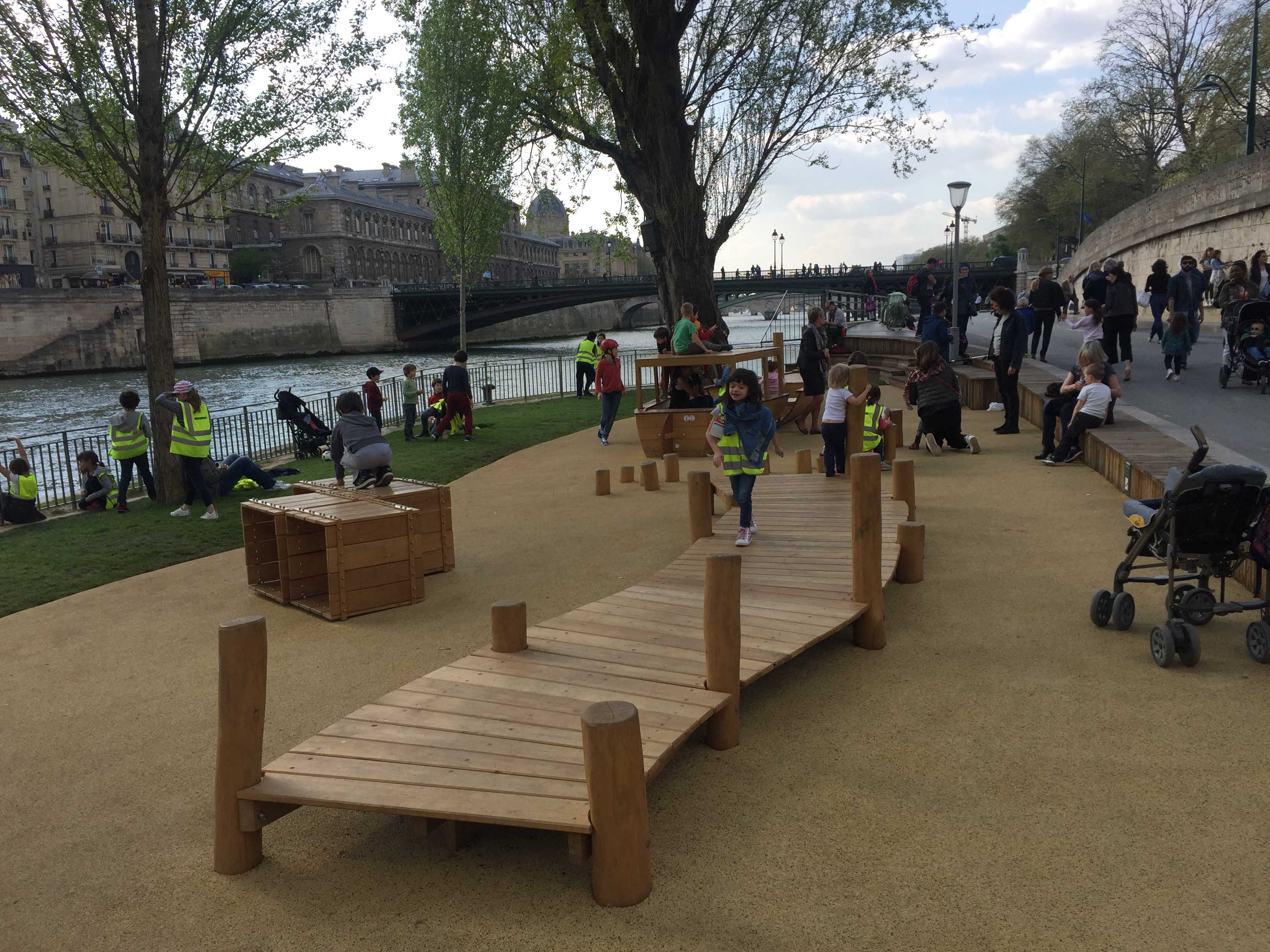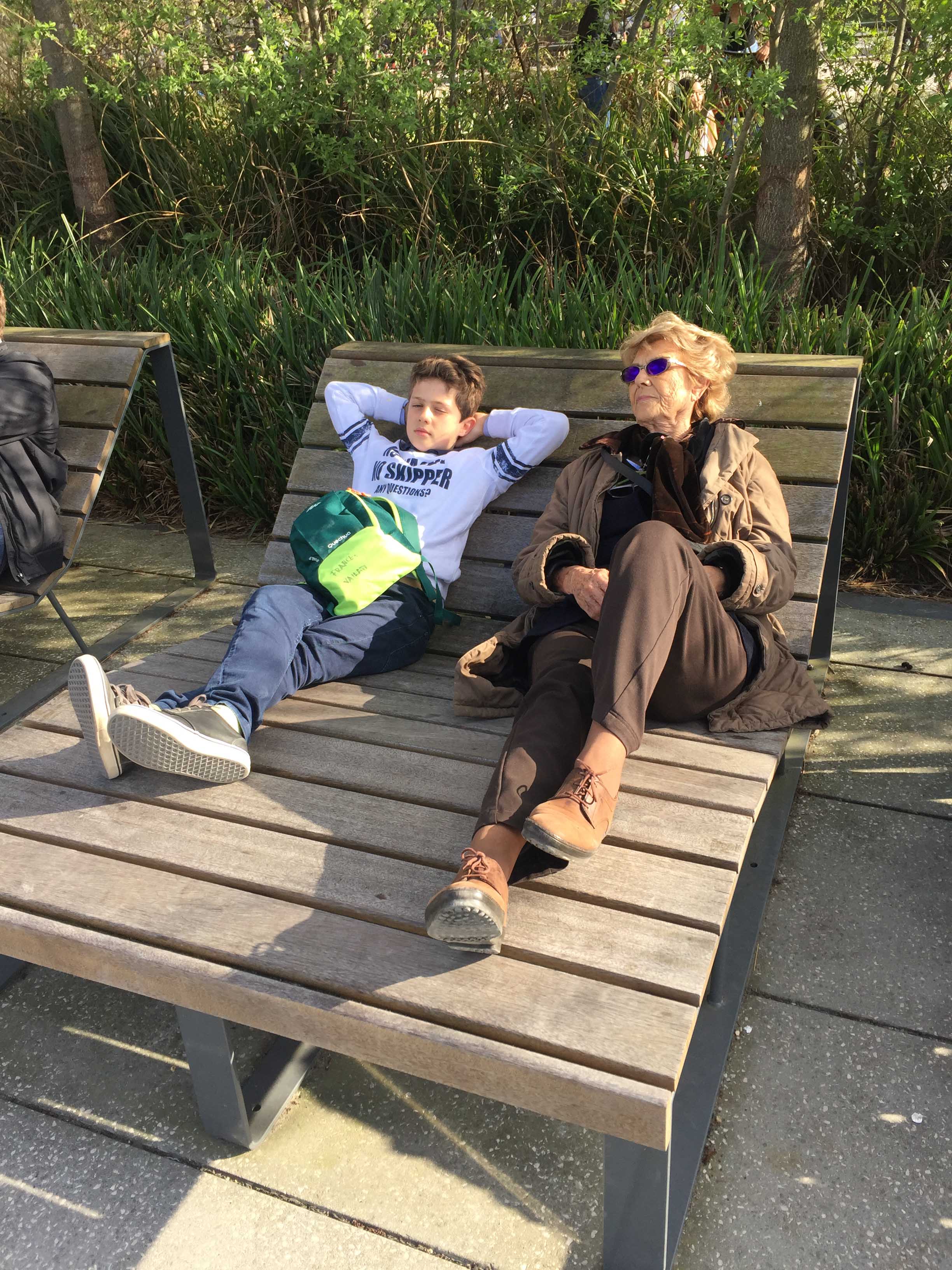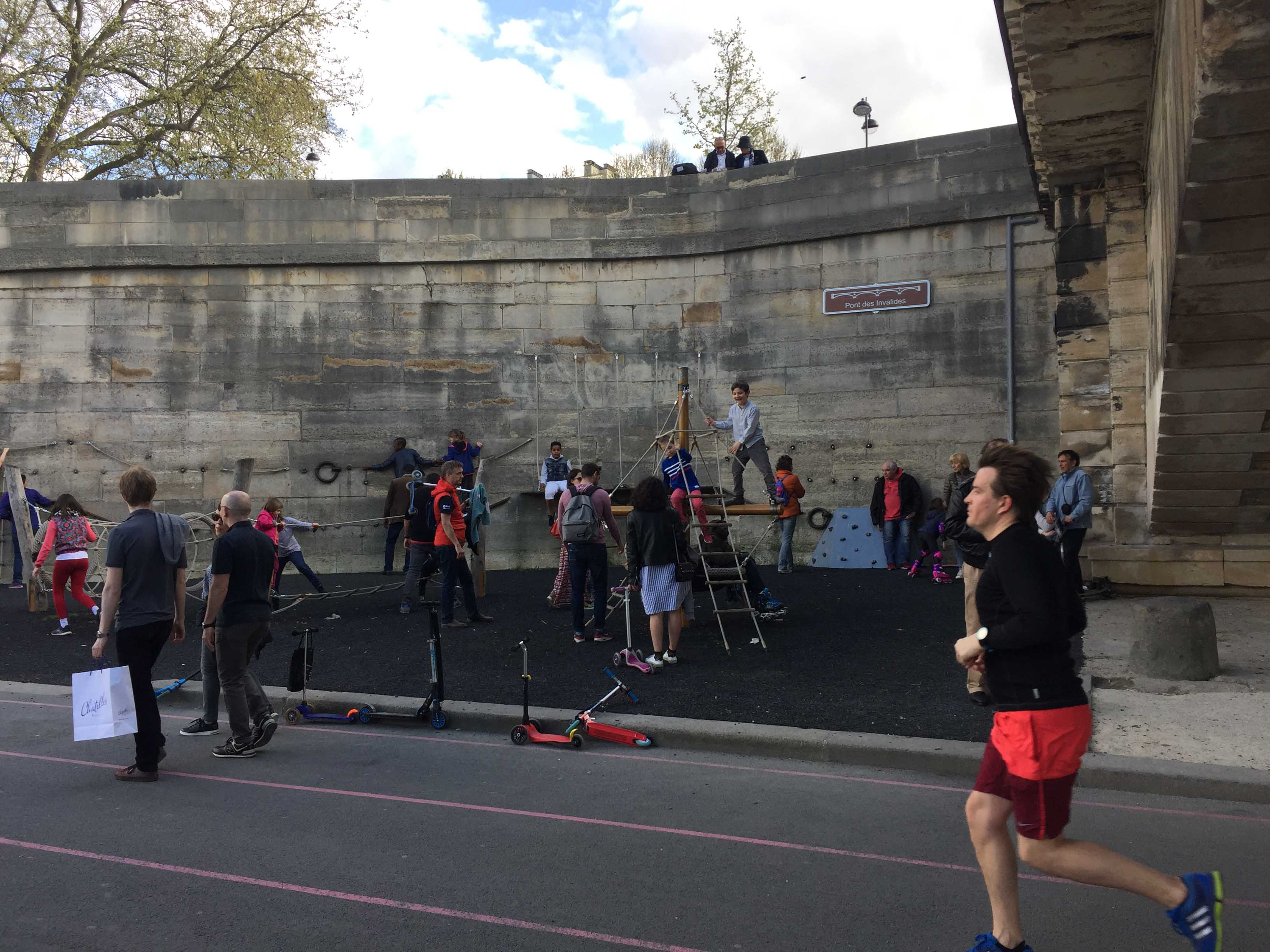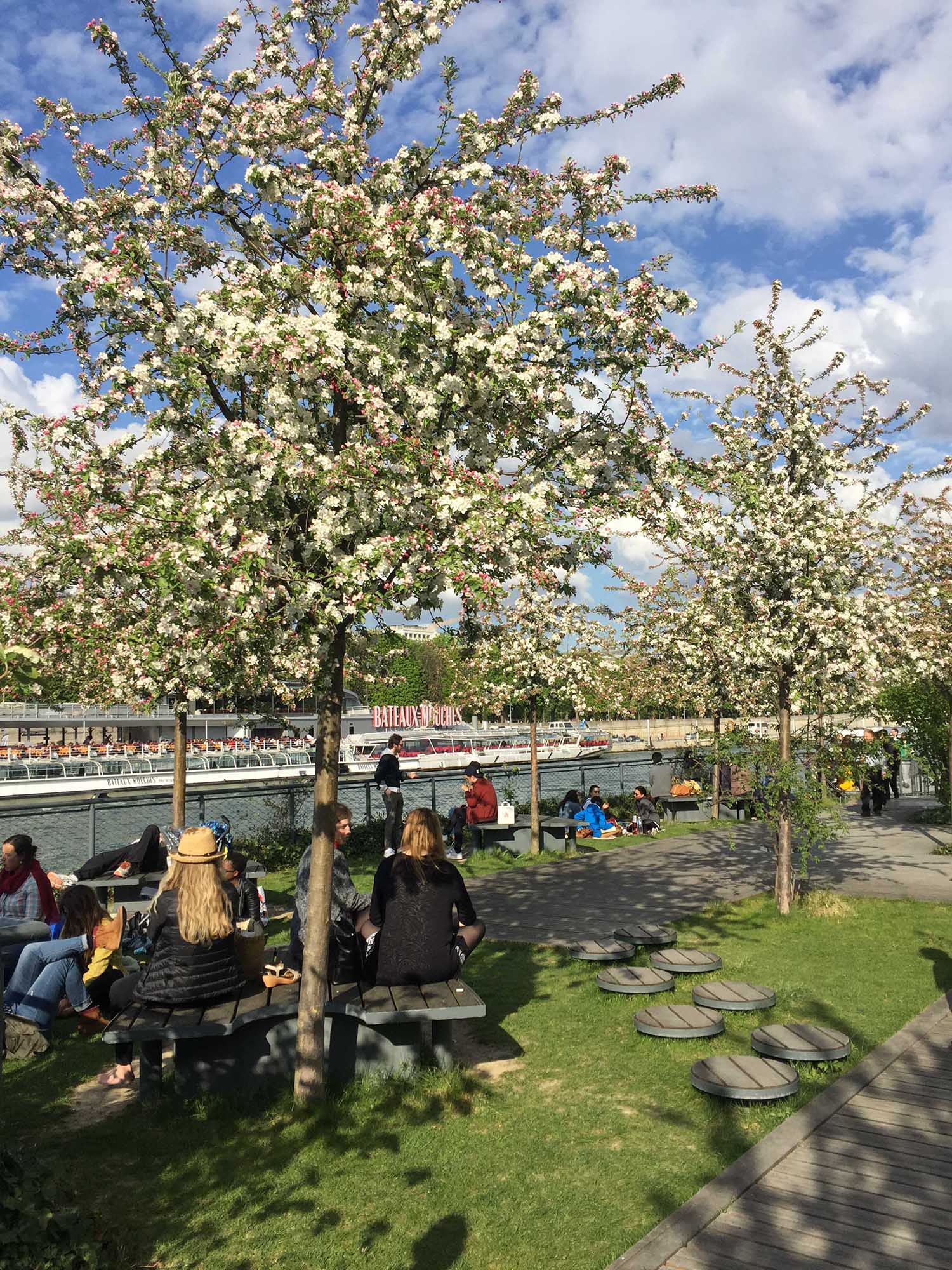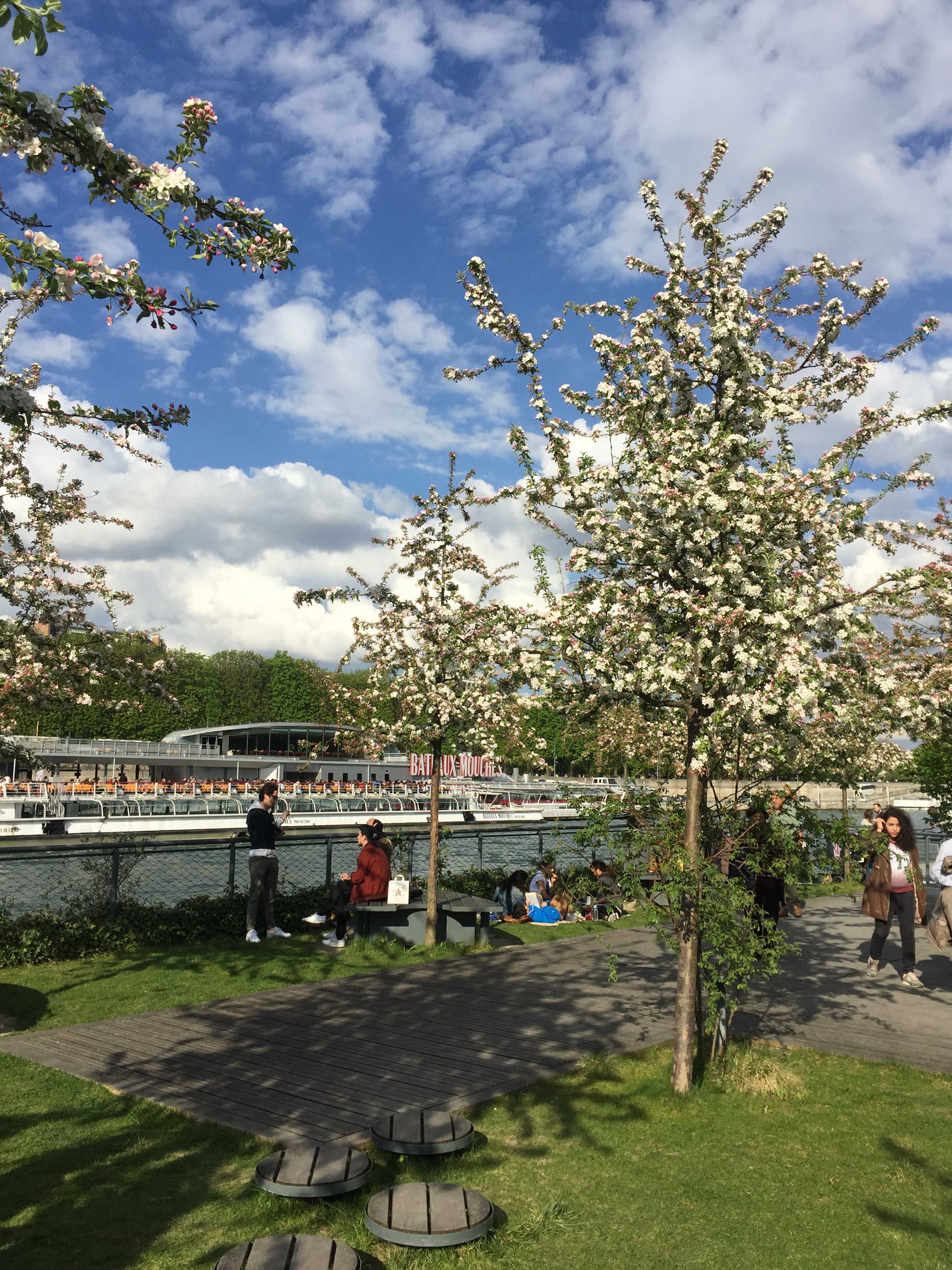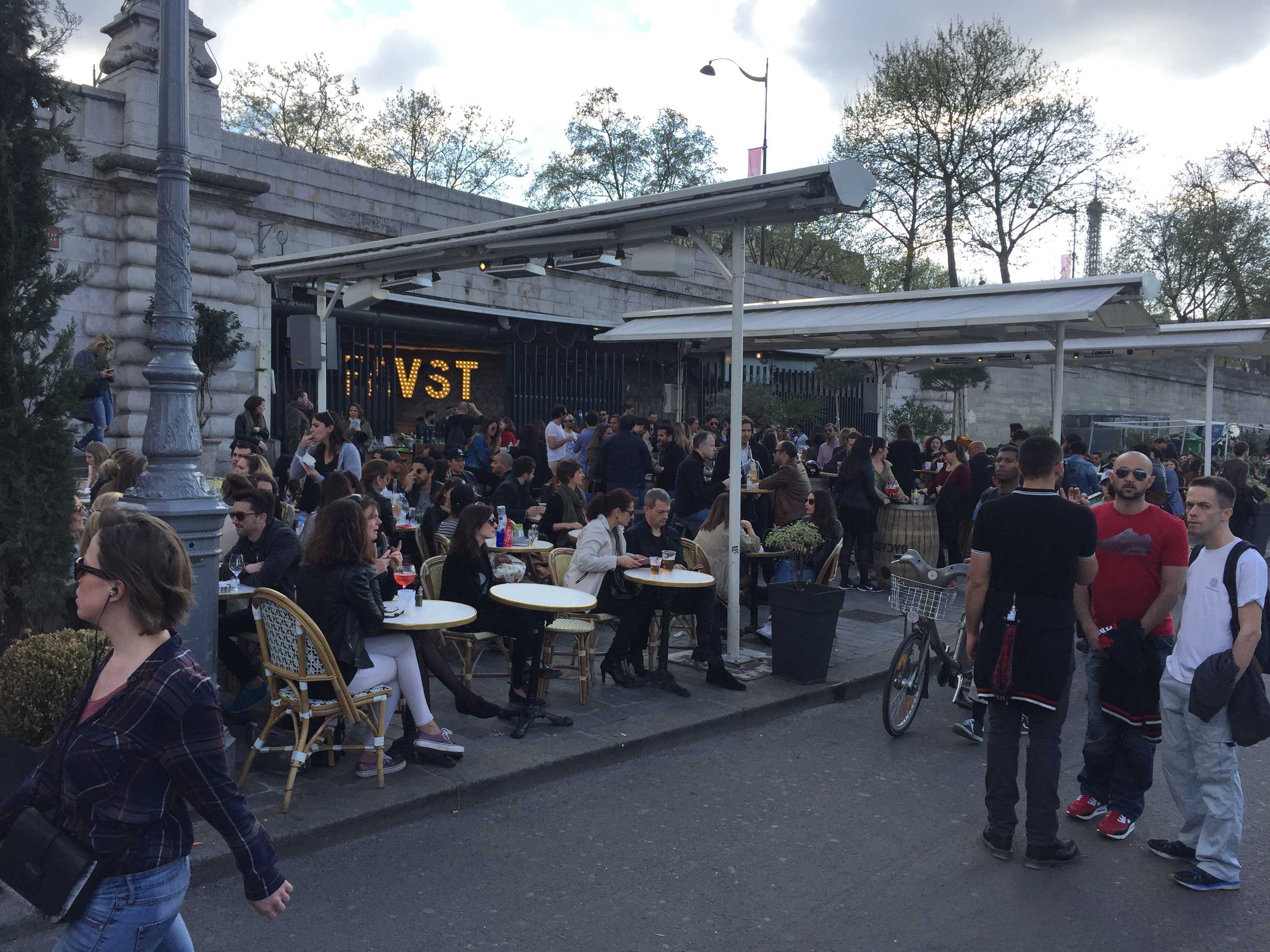Walking, resting, playing, in a word, “strolling” along the riverfront of Paris is today a 7km long reality that lies right where a few years ago there was an important car traffic artery along the Seine. With the re-enactment of the waterfront of Rive Droite, completed last April, is born a city park of 10 hectares in total use of Parisians and of their free time. Bowls, terraces, children’s playgrounds, refreshment points, picnic facilities, health paths and green spaces, biking or walking routes appear on the Parisian quai where once there were cars. With the recent 4.5km of retreats on the Rive Droite, the Parc Rives de Seine is completed, offering citizens and visitors a regenerated and healthy space, between the Bastille and the Eiffel Tower, on both banks of the Seine.
[one_half_last]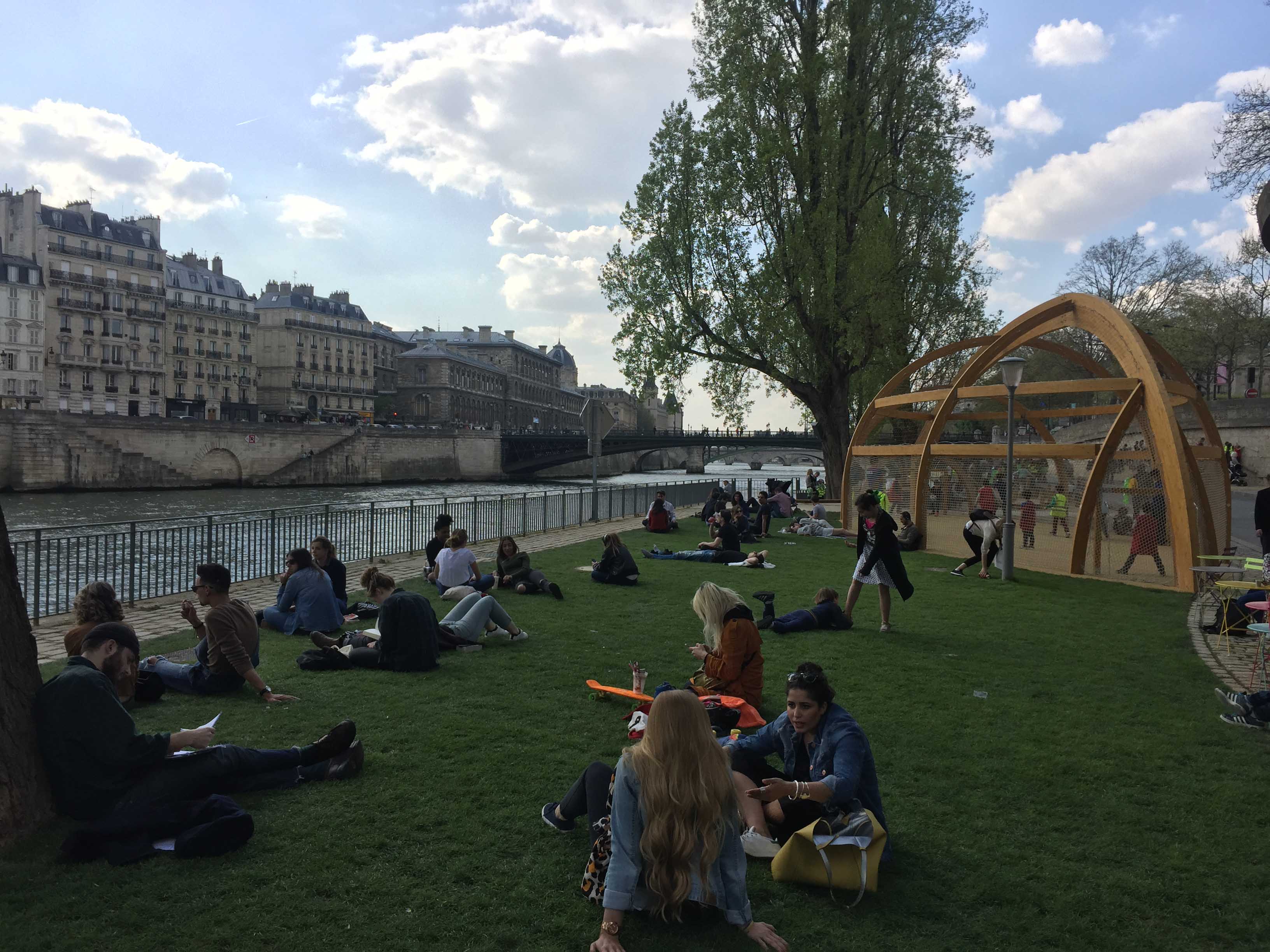 [/one_half_last]
[/one_half_last]
Re-naturalized spaces that help to counteract air and noise pollution and facilitate biodiversity: 1800 m2 of floating gardens with fruit trees, native plants, shrubs and over 2000 types of grasses that allow the establishment and development of animals and plants species. An overall improvement of the environment, including water quality that counts today 41 species of fish, ten times higher than in the 1970s.
[one_half_last]
[/one_half_last]
Leisure facilities on the banks. (© Marta Moretti, 2017)
The ‘recapture’ of the banks of the Seine was launched in 2010, starting from the Rive Gauche, and soon became the object of a metropolitan-level consultancy that allowed to collect thousands of contributions from the citizens. A public survey validated its general interest and, as early as summer 2012, a first 1,5km pedestrian walkway was built between Hôtel de Ville and the Arsenal basin and the fast-paced George Pompidou: a real urban boulevard lined with numerous pedestrian crossings. In summer 2013, the miles of walks recovered on the Rive Gauche became 2.4, between Pont Royal and Pont de l’Alma, returning to pedestrians and cyclists 4 hectares and a half of roads first occupied by traffic. Since June 2013, over 6 million visitors visited the Rive Gauche, also achieving a positive impact on the health of the environment: an average decrease of 15% NO2, a reduction of 10 decibels of noise and increased biodiversity besides the development of economic activities and diversified uses.
[one_half_last]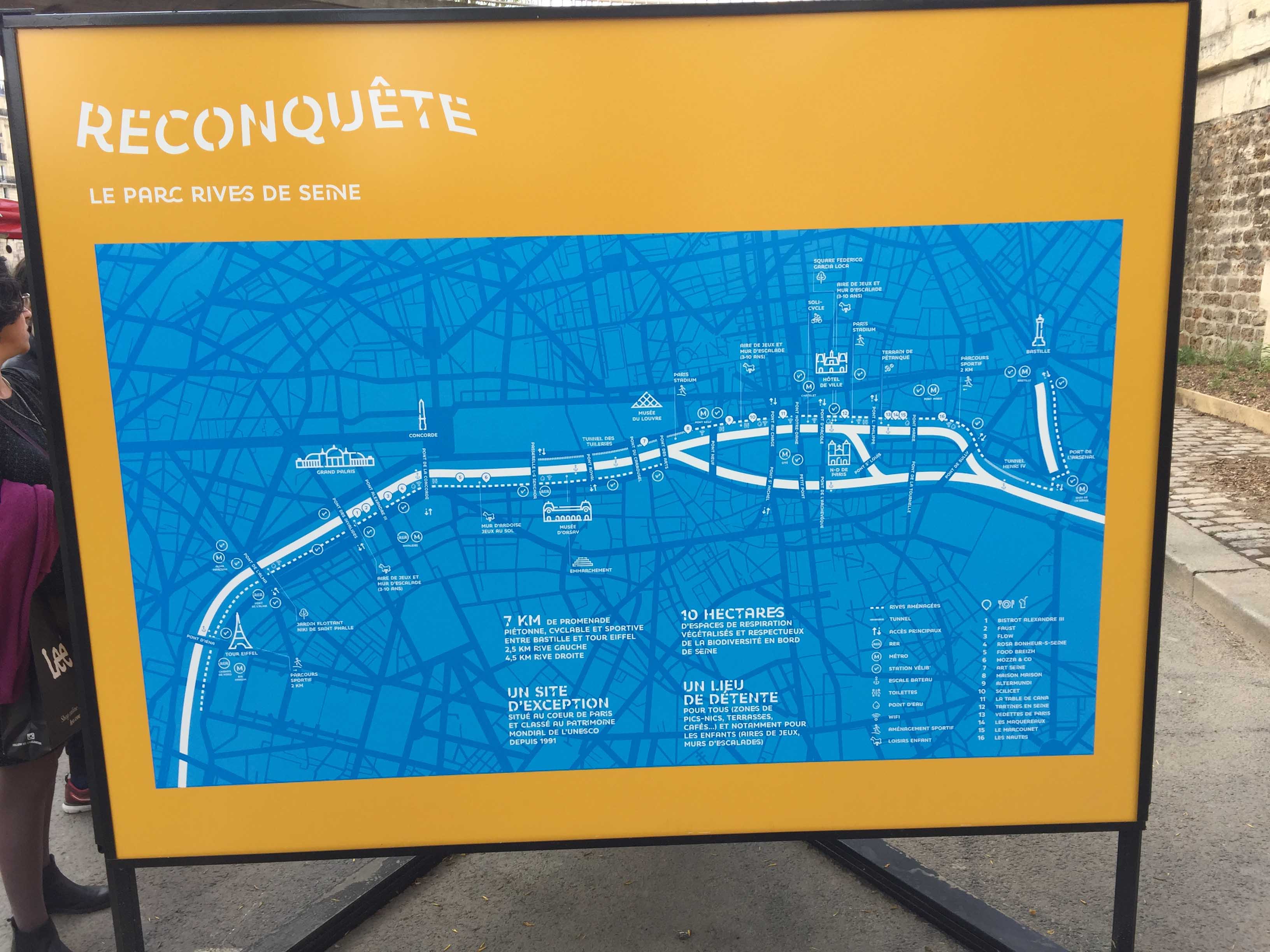 [/one_half_last]
[/one_half_last]
Starting from that positive experience, in the summer of 2015, the City of Paris proposed the recovery of the long Seine River on the Rive Droite. Even in this case, a preliminary consultation, followed by a public inquiry, gave voice to Parisians, French and visitors to express themselves and to help imagine this new public space through suggestions and proposals. The majority of respondents were favorable and, in September 2016, the Paris Municipal Council dictated it “of public interest”.
[one_half_last]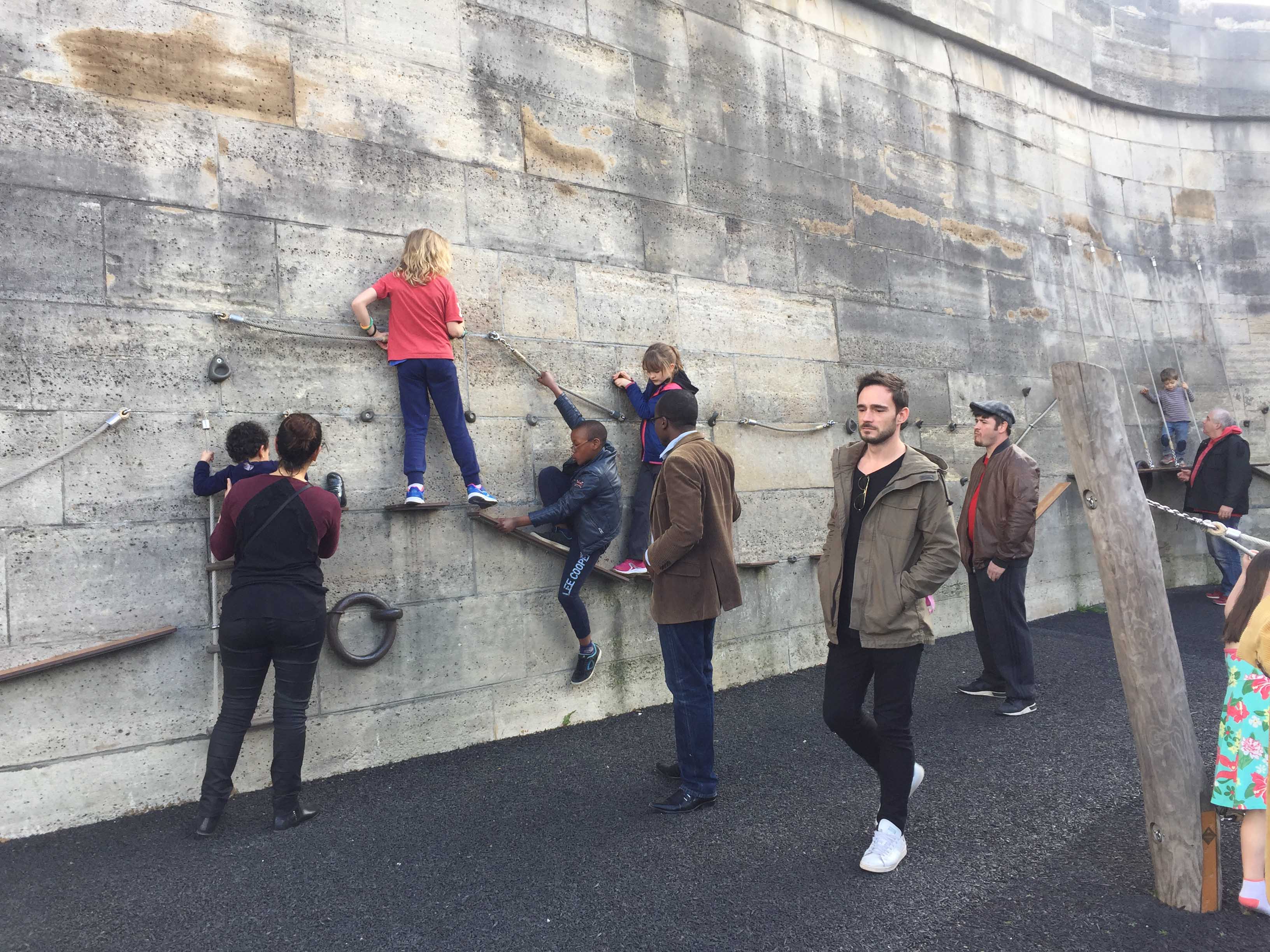 [/one_half_last]
[/one_half_last]
Today, the Parc Rives de Seine – made up of 2.4 kilometers of Rive Gauche and 4.5 miles of Rive Droite – is a new page in the long love story between Paris and Seine.
The banks of the Seine were inhabited since the dawn of the birth of the city. At first theater of trade and production, then, with the construction of new bridges, the banks began to be built, removing the heaviest activities, until they were transformed, in the middle of the twentieth century, into a place of pleasure and fun. Floating bathing establishments, swimming pools, sports and other activities related to leisure to the ‘colonization’ of cars, which developed from the 1930s and which was dominant until the most recent change of approach. With the abandonment of the extension of the A6 along the River Seine in 1974, the riverfront began to be partially reorganized in the 1980s by reducing the lanes dedicated to cars and constructing sidewalks and cycle lanes. In addition, the discovery of the cultural and sporting vocation of waterfronts around the world contributed to the development of initiatives aimed at ensuring greater access to water. The summer temporary closure to Rive Droite’s cars and the success of the Paris Plage event, which offered relaxation and entertainment facilities on the shores, open to all since 2002, demonstrated that the reopening of the banks was unstoppable.
[one_third_last]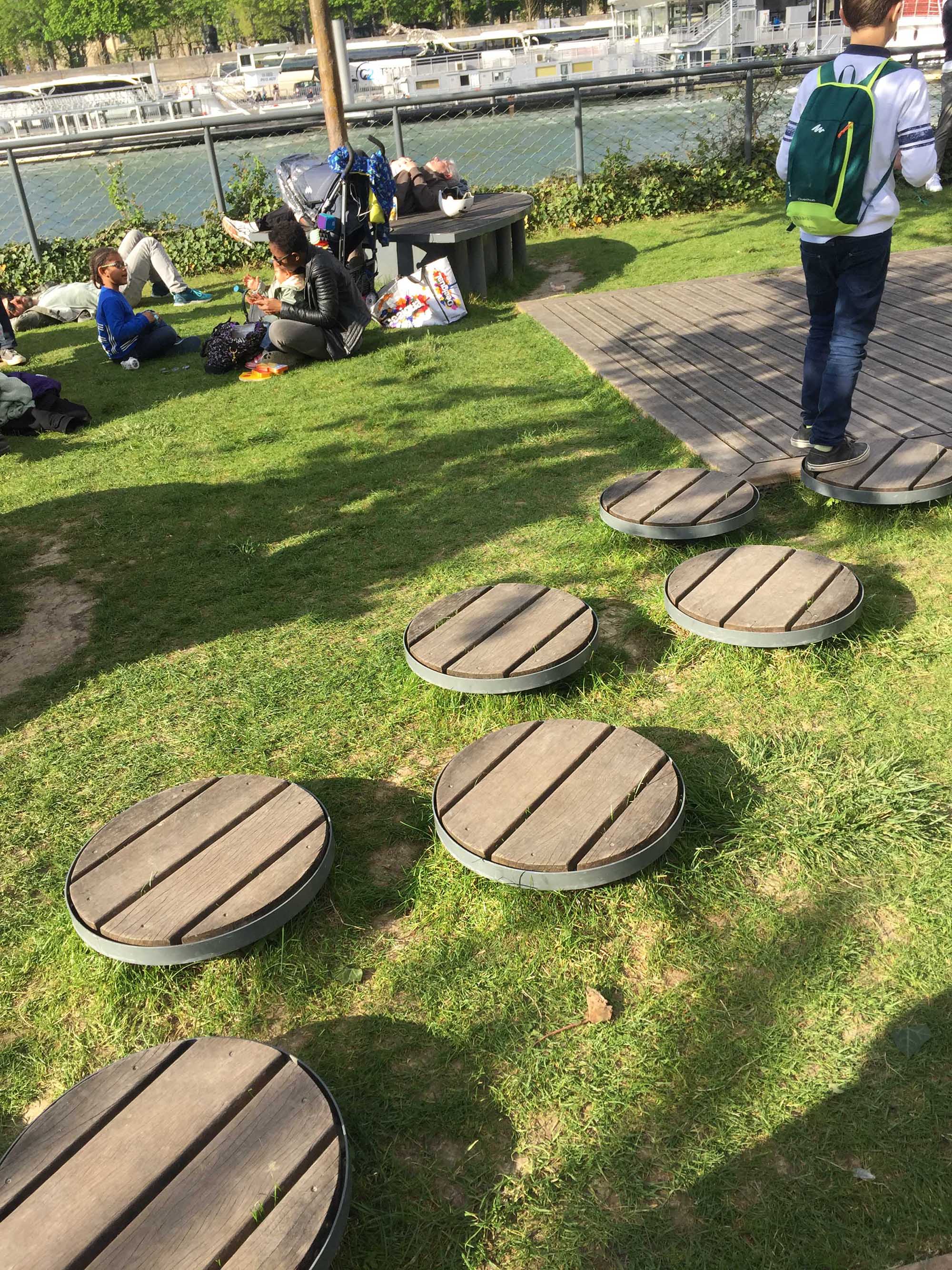 [/one_third_last]
[/one_third_last]
But the recovery of the Parisian riverfront does not stop here. New projects are already in the pipeline, such as an eco-friendly connection to the Hauts Rive Droite, a tram that connects the Pont de Saint_Cloud to the Hotel de Ville, and a water taxi service – Sea Bubble designed by the navigator Alain Thébault, and that will do the first experiment this summer. Finally, the central Ile de la Cité will be transformed by 35 projects presented by architect Dominique Perrault and the president of the Center des Monuments Nationaux, Philippe Bélaval, which will also have an impact on the entire waterfront.
[one_half_last]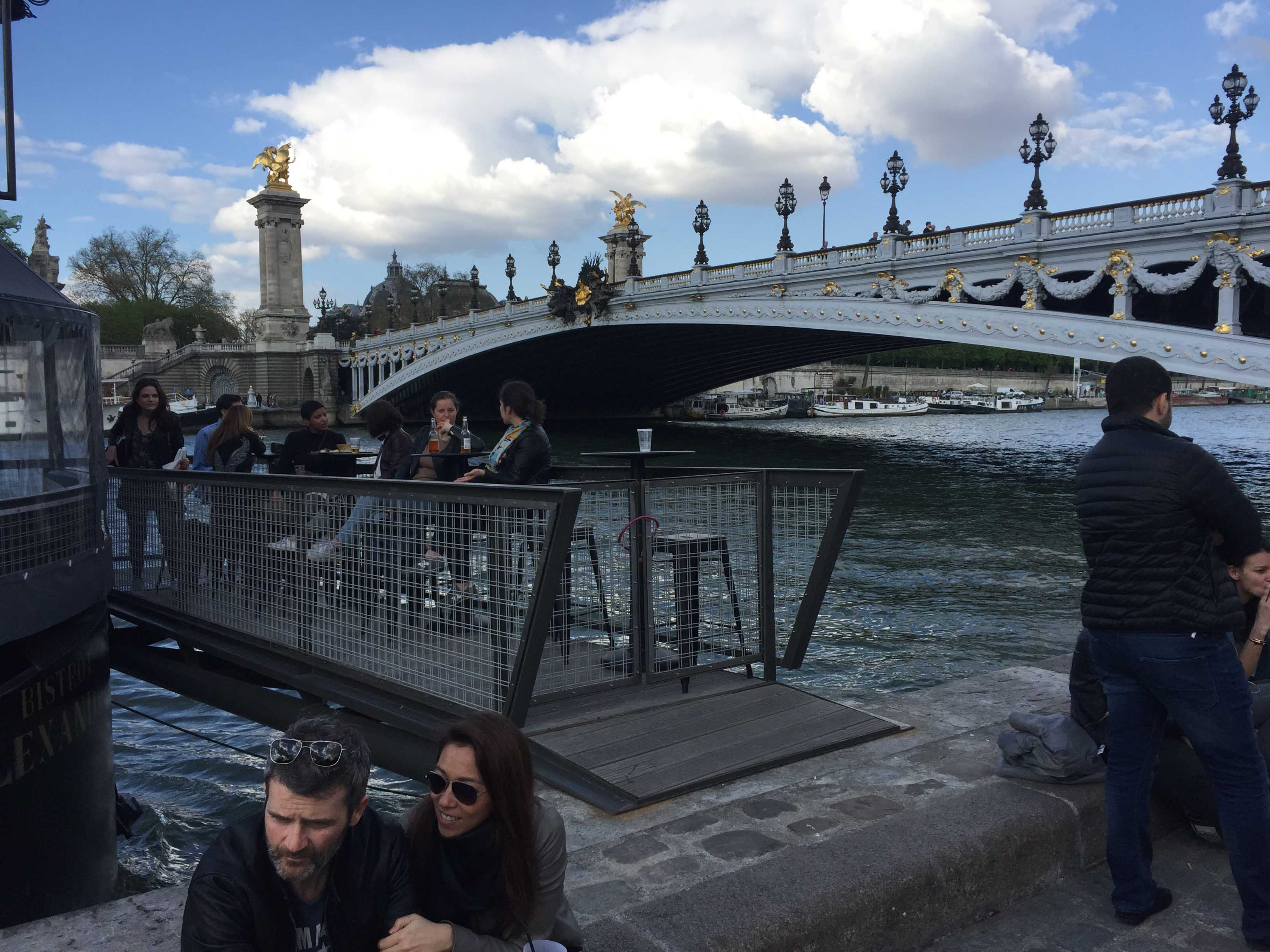 [/one_half_last]
[/one_half_last]
Head Image: Area sosta nei pressi del Pont de l’Alma. (© Marta Moretti, 2017)
Parc Rives de Seine: Parigi riconquista le rive della Senna
Passeggiare, riposare, giocare, in una parola, “bighellonare” lungo il riverfront di Parigi è oggi una realtà lunga 7 chilometri che trova posto proprio dove sino a pochi anni fa vi era una importante arteria di traffico automobilistico, lungo la Senna. Con la riconquista del fronte d’acqua della Rive Droite, completata lo scorso aprile, ha preso forma un parco urbano di 10 ettari a totale disposizione dei parigini e del loro tempo libero. Campi da bocce, terrazze, giochi per bambini, punti di ristoro, attrezzature per pic-nic, percorsi salute e spazi verdi, itinerari in bici o a piedi si susseguono sui quai parigini una volta occupati dalle auto. Con i recenti 4,5 chilometri recuperati sulla Rive Droite, si completa il Parc Rives de Seine che offre ai cittadini e ai visitatori uno spazio rigenerato e salubre, compreso tra la Bastille e la Tour Eiffel, su entrambe le sponde della Senna.
Attrezzature per il gioco e il tempo libero sulle rive. (© Marta Moretti, 2017)
Spazi rinaturalizzati che permettono di contrastare l’inquinamento dell’aria e del rumore e facilitano la biodiversità: 1800 m2 di giardini flottanti con alberi da frutto, piante autoctone, arbusti e oltre 2000 tipi di graminacee che permettono l’insediamento e lo sviluppo di specie animali e vegetali. Un miglioramento complessivo dell’ambiente che comprende anche quello della qualità dell’acqua che conta oggi 41 specie di pesci, dieci volte superiore rispetto agli anni ’70.
Area sosta sulle rive. (© Marta Moretti, 2017)
La ‘riconquista’ delle rive della Senna venne lanciata nel 2010, partendo dalla Rive Gauche, e divenne da subito oggetto di una concertazione a scala metropolitana che permise di raccogliere migliaia di contributi da parte dei cittadini. Una indagine pubblica ne validò l’interesse generale e, già nell’estate del 2012, venne realizzata una prima passeggiata pedonale di 1.5 chilometri, compresa tra l’Hôtel de Ville, il bacino dell’Arsenal, e la strada a scorrimento veloce George Pompidou: un vero boulevard urbano disseminato di numerosi attraversamenti pedonali. L’estate seguente 2013, i chilometri di passeggiate recuperate sulla Rive Gauche divennero 2,4, compresi tra Pont Royal a Pont de l’Alma, restituendo a pedoni e ciclisti ben 4 ettari e mezzo di strade prima occupate dal traffico stradale. Da giugno 2013, oltre 6 milioni di visitatori hanno frequentato la Rive Gauche ottenendo una ricaduta positiva anche in termini di salute dell’ambiente: una diminuzione media del 15% di biossido di azoto (N02), una riduzione di 10 decibel di rumorosità e una maggiore biodiversità sommata allo sviluppo di attività economiche e utilizzi diversificati.
Pannelli illustrativi il progetto Parc Rives de Seine. (© Marta Moretti, 2017)
A partire da quell’esperienza positiva, nell’estate del 2015, il Comune di Parigi propose il recupero anche del lungo Senna sulla Rive Droite. Anche in questo caso, una concertazione preventiva, seguita da una indagine pubblica, diede voce a parigini, francesi e visitatori per esprimersi e per contribuire ad immaginare questo nuovo spazio pubblico attraverso suggerimenti e proposte. La maggioranza degli intervistati si disse favorevole e, nel settembre 2016, il Consiglio Comunale di Parigi lo decretò di “pubblico interesse”.
Attrezzature sportive lungo le rive. (© Marta Moretti, 2017)
Oggi, il Parc Rives de Seine – composto dai 2,4 chilometri della Rive Gauche e dai 4,5 chilometri della Rive Droite – rappresenta una nuova pagina nella lunga storia d’amore tra Parigi e la Senna.
Le rive della Senna furono abitate sin dagli albori della nascita della città. Dapprima teatro di scambi e di produzione, poi, con la costruzione di nuovi ponti, le rive iniziarono ad essere edificate, allontanando le attività più pesanti, sino a essere trasformate, a metà del XX secolo, in un luogo di piacere e divertimento. Stabilimenti balneari galleggianti, piscine, sport e altre attività legate al tempo libero sino alla ‘colonizzazione’ delle automobili, che si sviluppò a partire dagli anni Trenta del Novecento e che fu dominante sino al più recente cambio di approccio. Con l’abbandono nel 1974 del progetto di prolungamento dell’A6 lungo i quai della Senna, il riverfront iniziò a essere in parte riorganizzato, negli anni ’80, riducendo le corsie dedicate alle automobili e costruendo marciapiedi e piste ciclabili. Inoltre, la scoperta della vocazione culturale e sportiva dei waterfront in tutto il mondo contribuì allo sviluppo di iniziative orientate a garantire un maggiore accesso all’acqua. La chiusura temporanea estiva alle auto della Rive Droite e il successo della manifestazione Paris Plage che propose spazi di relax e intrattenimento, sulle rive, aperti a tutti, a partire dal 2002, dimostrarono che il processo di riappropriazione delle rive era ormai inarrestabile.
Giardini galleggianti nei pressi del Pont de l’Alma. (© Marta Moretti, 2017)
Ma la riconquista delle rive parigine non si ferma qui. Sono già in cantiere nuovi progetti come un collegamento di trasporto ecologico sui quai Hauts Rive Droite un tram-bus per collegare il Pont de Saint_Cloud a l’Hotel de Ville, e un servizio di taxi acquei – Sea Bubble – progettato dal navigatore Alain Thébault, e che farà la prima sperimentazione quest’estate. Infine, la centralissima Ile de la Cité sarà oggetto di una metamorfosi, articolata in 35 progetti, presentati dall’architetto Dominique Perrault e dal Presidente del Centre des Monuments Nationaux, Philippe Bélaval, che avrà delle ricadute anche sull’intero fronte d’acqua.
Punti di ristoro lungo il riverfront. (© Marta Moretti, 2017)
Head Image: Area sosta nei pressi del Pont de l’Alma. (© Marta Moretti, 2017)
